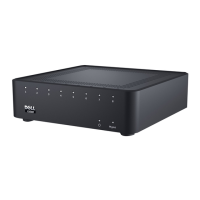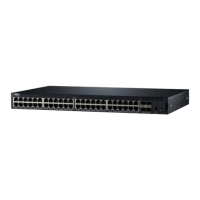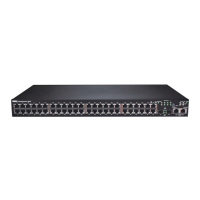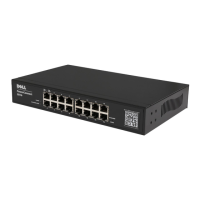Network Administration: Quality of Service 237
FILE LOCATION: C:\Users\gina\Desktop\Checkout_new\Dell Astute\User
Guide\Dell_Astute_Network_Admin_QoS.fm
DELL CONFIDENTIAL – PRELIMINARY 8/9/16 - FOR PROOF ONLY
If a more complex set of rules is needed, several class maps can be grouped
into a super-group called a policy (see
"Aggregate Policer
" on page 238).
To define a class map:
1
Click
Network Administration > QoS Mapping
>
Class Mapping
.
The previously-defined class maps are displayed.
2
To add a class map, click
Edit, Add
.
A new class map is added by selecting one or two ACLs and assigning them
a class map name. If a class map has two ACLs, specify that a frame must
match both ACLs, or that it must match either one or both of the ACLs
selected.
3
Enter the parameters.
–
Class Map Name
— Enter the name of a new class map.
–
Match ACL Type
— Enter the criteria that a packet must match in
order to belong to the flow defined by the class map. The possible
options are:
•
IP
— A packet must match either of the IP-based ACLs in the
class map.
•
MAC
— A packet must match the MAC-based ACL in the class
map.
•
IP and MAC
— A packet must match the IP-based ACL and the
MAC-based ACL in the class map (match-all).
•
IP or MAC
— A packet must match either the IP-based ACL or
the MAC-based ACL in the class map (match-any).
–
IP
ACL
— Select the IPv4-based ACL or the IPv6-based ACL for the
class map.
–
MAC ACL
— Select the MAC-based ACL for the class map.
–
Preferred ACL
— Select whether packets are first matched to an
IP-based ACL
or a
MAC-based ACL
.
Policers
The rate of traffic that matches a pre-defined set of rules can be measured,
and limits, such as limiting the rate of file-transfer traffic that is allowed on a
port, can be enforced.

